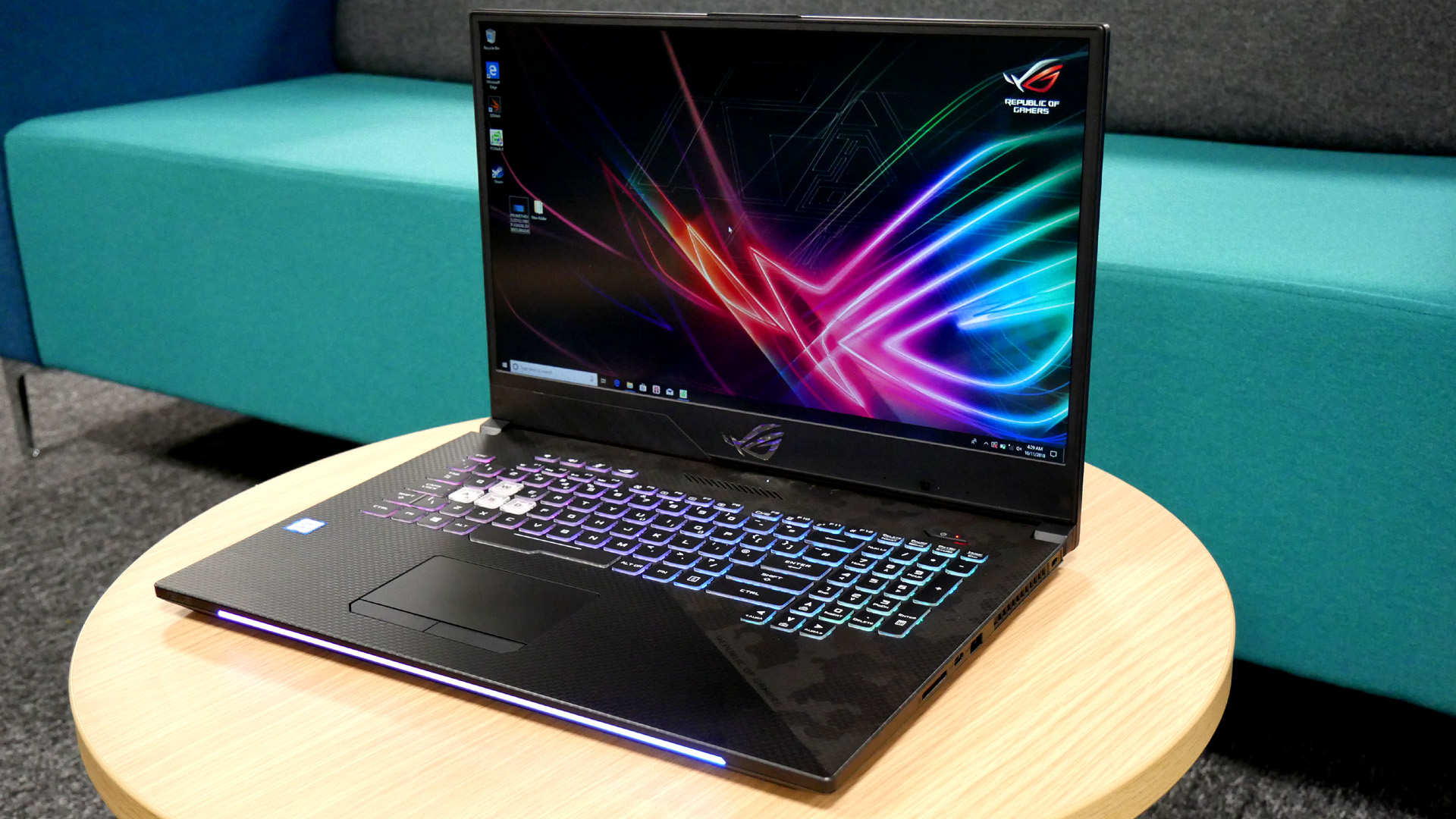TechRadar Verdict
Asus’s moderately mean, new 17.3-inch portable PC gaming machine packs LED lighting and GeForce 1060 graphics.
Pros
- +
High-quality chassis
- +
Packed with awesome features
- +
Good all-round performance
Cons
- -
GeForce 1060 graphics is only just good enough
- -
Expensive for this level of performance
- -
Limited battery life
Why you can trust TechRadar
All brawn and no brains. A big old brick with plenty of performance but zero portability and battery life. That’s the traditional approach to high-performance gaming laptops. But, it doesn’t have to be that way.
[Editor's Note: A previous version of this review incorrectly referred to the 15.6-inch version of this laptop. This has been corrected throughout the review, and we apologize for the error.]
The new Asus ROG Strix Scar II is hardly one of the most petite Asus laptops. But it is sleeker and slimmer than the gaming monsters of old. Partly that’s thanks to its slim-bezel design. With ultra-narrow bezels on three sides of its display, the Scar II fits into about as small an overall footprint as feasible for a 17.3-inch gaming laptop.
But, that doesn’t mean it’s short of features. That LCD display is both IPS and capable of 144Hz refresh, for instance. There’s a quad-core, 8th Gen Intel CPU, Nvidia GeForce GTX 1060 graphics, an RGB backlit keyboard, loads of connectivity and more mood lighting than you can shake an LED at.
That’s just as well, because the Scar II is up against some serious competition. The likes of the Acer Predator Helios 300 matches many of its specs and is aggressively priced, while laptops like the Gigabyte Sabre 17-W8 also pack similar components for slightly less cash.

Here is the Asus ROG Strix Scar II GL704GM configuration sent to TechRadar for review:
CPU: 2.2GHz Intel Core i7-8750H (hexa-core, 9MB cache, up to 4.1GHz boost)
Graphics: Nvidia GeForce GTX 1060 6GB
RAM: 32GB DDR4 (2,666MHz)
Screen: 17.3-inch Full HD (1,920 x 1,080) display (IPS, 144Hz)
Storage: 256GB M.2 SSD; 1TB HDD
Optical drive: N/A
Connectivity: 802.11ac 2x2 Wave 2 WLAN, Bluetooth 5.0
Camera: HD webcam (720p)
Ports: 2 x USB 3.1 G1, 1 x USB 3.1 G2, 1 x USB-C, 1 x DisplayPort, 1 x HDMI, Ethernet, SD card
Weight: 5.3 pounds (2.4kg)
Size: 14.2 x 10.3 x 1.03 inches (36.1 x 26.2 x 2.61cm; W x D x H)
Price and availability
At $1,699 in the US, £1,699 in the UK and AU$3,025 in the land of Australia, Asus’s new ROG Strix Scar II GL704GM is far from the cheapest laptop that offers its core components of CPU and graphics with a 144Hz display.
The Acer Predator Helios 300 – albeit a 15.6-inch laptop – will give you all those components for around £300 / $300 less cash.
Sign up for breaking news, reviews, opinion, top tech deals, and more.
So, what you’re paying for in comparison is Asus’s particular attention to detail, the quality (and size) of the chassis, the execution of those components and then all the added extras that come with every Asus ROG product.
Design
First up, the Asus ROG Strix Scar II feels solid and robust. The chassis is a mix of tough plastic and brushed aluminium and it feels ready to take a beating.
That built-to-last vibe carries over to the customizable, quad-zone RGB backlit keyboard. It’s firm under finger and very satisfying for gaming. It also offers a desktop-style layout, highlighted WASD keys and a longer keystroke than you get with conventional laptop keyboards.

The RGB keyboard is complemented by an LED-powered ROG logo on the screen cover and another backlit LED strip along the front of the chassis. Along with the keyboard, they’re all customizable via Asus’s Aura Lighting app. So, you can choose colors and have everything running from full reheat for show to fully shut down for gaming stealth. The choice is yours.
The narrow screen bezel, meanwhile, gives the Scar II a contemporary feel. It also means this second-gen Scar is nearly 2.5cm narrower overall than its predecessor.

It’s also one of the slimmer 17.3-inch gaming laptops around, at just 2.6cm thick and weighing in at 2.9kg. As for connectivity, we have no complaints.
There are plenty of USB ports, including a USB-C port, and Asus has also provided both DisplayPort and HDMI connectivity.
Technology and cars. Increasingly the twain shall meet. Which is handy, because Jeremy (Twitter) is addicted to both. Long-time tech journalist, former editor of iCar magazine and incumbent car guru for T3 magazine, Jeremy reckons in-car technology is about to go thermonuclear. No, not exploding cars. That would be silly. And dangerous. But rather an explosive period of unprecedented innovation. Enjoy the ride.
